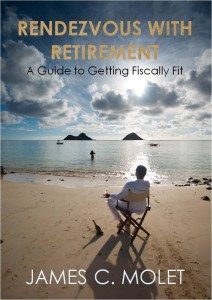 If you just retired, congratulations. You’ve received the gold watch, relished the looks of co-workers who envy your new freedom, and begun to plan that long-awaited European tour you had always hoped to take. Life is good, but you do have concerns – mainly, whether your future income can sufficiently cover your basic living expenses, plus those little extras that make retirement special.
If you just retired, congratulations. You’ve received the gold watch, relished the looks of co-workers who envy your new freedom, and begun to plan that long-awaited European tour you had always hoped to take. Life is good, but you do have concerns – mainly, whether your future income can sufficiently cover your basic living expenses, plus those little extras that make retirement special.
Financial experts generally calculate that you need between 70% and 85% of your pre-retirement income to maintain your lifestyle. Even if you were diligent about saving during your working years, it’s likely that your investment portfolio has not yet fully recovered from the recession, and returns are still lower than you expected them to be. How do you ensure that your nest egg is big enough to meet ongoing expenses?
Significant Future Income Increases Are Unlikely
Your future income will be a combination of Social Security benefits and the systematic liquidation and withdrawal of your retirement assets over the remaining years of your life. At age 65, you can expect to live, on average, another 19.1 years, according to the Centers for Disease Control and Prevention (CDC). If you are genetically gifted, however, you may live to 100 or longer – the number of centenarians in the U.S. rose to 53,345 in 2010, a 65.8% increase from 1980.
Your initial retirement calculations were probably based upon an annual withdrawal rate of 4% of asset value, a figure most financial planners had generally agreed would provide a stable income for 30 years. Nowadays, however, that percentage is considered by some to be too liberal. Recent studies have suggested that in the current economic environment, withdrawing income at a 4% rate could increase the risk of depleting your assets during your lifetime. Since the level of your future income is uncertain and may be lower than originally anticipated, it would be prudent to reduce your living expenses where possible so that less income is needed to provide the same quality retirement for your remaining years, however long that may be.
Read more . . .




